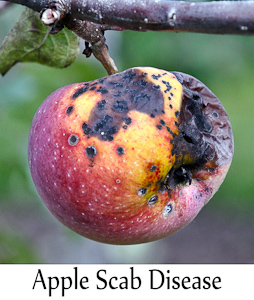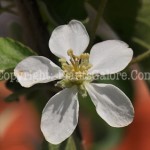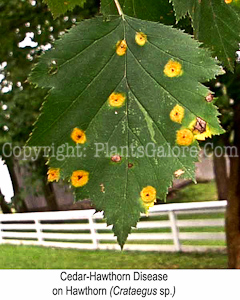 Crabapple trees (Malus species) can add beauty and interest to the landscape. They can also be messy, sickly and bothersome if care is not taken to select proper cultivars i.e. named varieties, to plant.
Crabapple trees (Malus species) can add beauty and interest to the landscape. They can also be messy, sickly and bothersome if care is not taken to select proper cultivars i.e. named varieties, to plant.
There are literally hundreds, perhaps thousands, of cultivars of crabapples currently available. Every nursery or plant store will offer many from which to choose. So, how do you make the right choice for your landscape? The following traits should be considered when purchasing one for your yard:
Disease Resistance. Certain species of ornamental landscape plants come with a lot of “baggage” that could cause you problems in the future. One big problem is diseases. From the day you put certain plants in the ground, you can bet with a high degree of certainty that someday, they will get sick. So, the key is to do a little research before hand and AVOID future problems.
 Although we make a big deal of calling these ornamental trees, crabapples, the fact is that they are just apple trees with small fruit. Therefore, they have the same range of problems as their Red Delicious or Granny Smith cousins. In the landscape, we are not so concerned with the quality of the fruit as they are in the orchard. However, crabapples disfigured by diseases can also be a big negative in certain trees in the landscape.
Although we make a big deal of calling these ornamental trees, crabapples, the fact is that they are just apple trees with small fruit. Therefore, they have the same range of problems as their Red Delicious or Granny Smith cousins. In the landscape, we are not so concerned with the quality of the fruit as they are in the orchard. However, crabapples disfigured by diseases can also be a big negative in certain trees in the landscape.
Like other apple trees, crabapples are susceptible to the fungal diseases called apple scab and cedar-apple rust. These diseases can disfigure the leaves and, in extreme cases, cause defoliation of the tree by mid to late summer. This is not a pretty sight. Successive years of defoliation can weaken the tree and lead to its decline. Some sort of fungicide treatment is the most common approach to combating this disease both in the landscape and the orchard.
A serious, life-threatening, bacterial disease caused fireblight also infects crabapples. This disease will kill the tips of branches in its early stages and may eventually kill the entire tree. Since it is bacterial, fungicides do not work against it and it is very difficult for the homeowner to treat.
 Our goal should always be to minimize the use of pesticides in the home landscape. This is a place for beauty and nature. So, the preferred approach is to avoid these diseases by seeking out cultivars that are resistant to them.
Our goal should always be to minimize the use of pesticides in the home landscape. This is a place for beauty and nature. So, the preferred approach is to avoid these diseases by seeking out cultivars that are resistant to them.
Plant breeders work hard to select crabapple cultivars resistant to the common diseases. Resistance does not mean immunity. Resistant plants may still become infected but generally not as easily as susceptible types. If they do develop the disease, it may not be as severe.
We will cover the ornamental traits that you need to consider when selecting crabapples in the next few paragraphs. However, for the general home garden, disease resistance should trump all. Sure a certain cultivar may have magnificent flowers in May, but, if it loses all its foliage to apple scab, it will spend most of the summer looking pretty ratty.
Fruit. Crabapples develop fruit in a wide range of colors, quantity, sizes and persistence (how long they hang on the tree). These factors are important to consider especially if the tree is located over a driveway or sidewalk where they would cause a mess.
If the tree is to be located away from the house, it may be worthwhile to have a heavy fruiting cultivar that hangs onto its fruit throughout the winter. That will provide a great view from the house and any mess with the fruit will be minimized.
Also, some cultivars are “alternate bearing” which means that they produce a heavy crop one year and a small one the next. For consistent display, choose annual bearing types. Sprays are available which will “thin” the fruit from the tree but this process is dependent on proper timing and the results can vary greatly from year to year. The best control for excessive fruiting is to plant a low producing cultivar if that is what you desire for a particular location.
Flowers. Most crabapples have pinkish colored buds that open into white to pink blooms. A few darker red flowering cultivars are available but many of these are susceptible to apple scab. As with most members of the Rosaceae Family of plants, apple blossoms have five petals. Double flowering cultivars with many more petals are also available. If you have room for several crabapples, you can also choose early, mid and late season blooming  cultivars to extend the season.
cultivars to extend the season.
Foliage. Leaf color on crabapples may range from light to dark green to dark purple. Be sure the contrast between flower, leaf and fruit color is such that each trait is properly displayed.
Water Sprouts and Suckers. Water sprouts are vigorous shoots that grow straight up from branches often appear after a heavy pruning the previous season. Suckers are those annoying stems that come up from the ground at the base of the tree. Both types of growth are undesirable and certain cultivars are more prone to produce them than others.
Check on these factors before purchasing that crabapple to cut the level of maintenance and increase the level of enjoyment for years to come.
